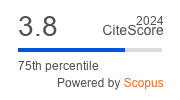Article | Open Access
Natural Surveillance for Crime and Traffic Accidents: Simulating Improvements of Street Lighting in an Older Community
| Views: | 9970 | | | Downloads: | 1656 |
Abstract: This study aimed to plan an alternative for community street lighting in an older community by simulating illuminance improvements. We applied the natural surveillance principle of crime prevention through environmental design to an older community in Busan Metropolitan City in South Korea. We conducted four field investigations to identify lighting sources and measure their illuminance and heights. Using the Relux Pro program, the gaps in lighting were identified and alternative plans for improvement for night lighting were simulated. Narrow alleys and houses were sources of light disruption and lighting blind spots. We determined the location and type of lighting within the community and considered the continuity necessary to meet natural surveillance standards in alternative settings. We considered visibility, facial recognition, the risk of traffic accidents, and other variables (i.e., lamp type). Our results confirmed that the community’s average horizontal illuminance met the requirement of the Korean Agency for Technology and Standards and the minimal illuminance criterion of the International Commission on Illumination in all community lighting spaces—which was improved by about 2.2% to 85.7% compared to the previous situation. The results of this study are meaningful in that they present an effective planning support tool using simulation methods to establish community street lighting alternatives and determine their suitability.
Keywords: Busan; facial recognition; illuminance; natural surveillance; Relux Pro; street lighting; walkability
Published:
© Yeo-Kyeong Kim, Yun-Kyu Lee, Donghyun Kim. This is an open access article distributed under the terms of the Creative Commons Attribution 4.0 license (http://creativecommons.org/licenses/by/4.0), which permits any use, distribution, and reproduction of the work without further permission provided the original author(s) and source are credited.


